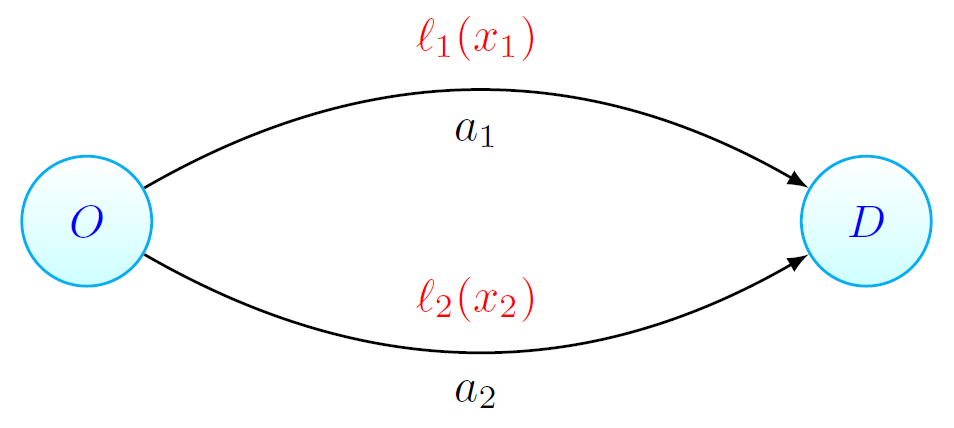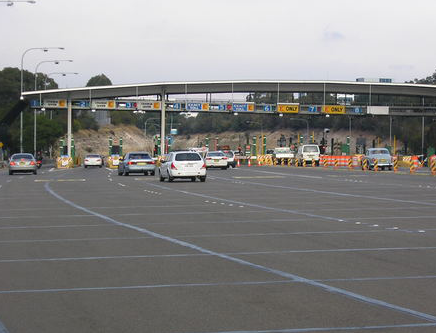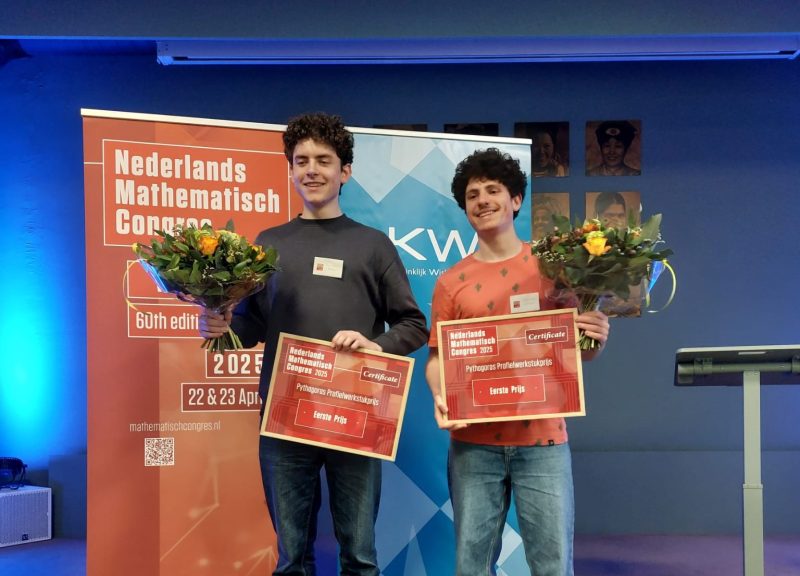In a preceding article we have used a simple model to demonstrate how selfish behavior can create additional congestion. One way to mitigate the consequences of selfish behavior, is by introducing tolls (or taxes) on certain parts of the road network. This is also known as road pricing, and such a system was first successfully implemented in Singapore (click here for more info).
The idea is that drivers will not only choose their route based on the travel time along a path through the network, but they will also take into account the toll or tax they have to pay on that path. This toll may vary along the day (think of higher tolls during rush hour) or can depend on the amount of traffic congestion on certain parts of the network. The goal is to choose the tolls in such a way so that the traffic spreads out nicely over all paths, leading to an efficient (or even optimal) usage of the network.
In the remainder of this article, we will see how tolls can be used in order to improve the inefficient network usage in Pigou's example from the previous article. The Pigou network is given below. The latency functions on the arcs, describing how long it takes to travel between the two points, are  and
and  where
where  is the amount of traffic on arc
is the amount of traffic on arc  . One unit of flow has to be divided over the two arcs.
. One unit of flow has to be divided over the two arcs.

In the selfish equilibrium  , all flow is sent over the first arc, that is,
, all flow is sent over the first arc, that is,  . In the social optimum
. In the social optimum  , the flow is split among the two arcs, that is,
, the flow is split among the two arcs, that is,  (see the previous article for details).
(see the previous article for details).
We now explain how the tolls are modeled. On every arc  , we introduce a non-negative (constant)
, we introduce a non-negative (constant)  representing the toll. The new objective of the drivers is to minimize a combination of latency and toll. At first this might seem somewhat strange, since
representing the toll. The new objective of the drivers is to minimize a combination of latency and toll. At first this might seem somewhat strange, since  is interpreted in terms of time, and
is interpreted in terms of time, and  in terms of money. We assume that drivers 'transform' the toll into time, e.g., 10 euros might correspond to 30 minutes of travel time. This transformation is modeled by the (sensitivity) parameter
in terms of money. We assume that drivers 'transform' the toll into time, e.g., 10 euros might correspond to 30 minutes of travel time. This transformation is modeled by the (sensitivity) parameter  . The new objective of the drivers is now to minimize the combined cost
. The new objective of the drivers is now to minimize the combined cost  . In the example above, we have
. In the example above, we have  (if we measure time in minutes and money in euros). Of course, different drivers might make different transformations, but here we assume they all do this in a similar way, i.e., we say the drivers are homogeneous. If different drivers make different transformations, we call them heterogeneous. This can be represented in the combined cost by introducing parameters
(if we measure time in minutes and money in euros). Of course, different drivers might make different transformations, but here we assume they all do this in a similar way, i.e., we say the drivers are homogeneous. If different drivers make different transformations, we call them heterogeneous. This can be represented in the combined cost by introducing parameters  that represent the transformation factor of the
that represent the transformation factor of the  -th class of drivers, i.e., the combined cost then becomes
-th class of drivers, i.e., the combined cost then becomes  for the drivers in class
for the drivers in class  .
.
Another important modeling assumption is that we assume that (for example) a government is not interested in the profits they make from this toll system, that is, their (quantitative) measure for system performance is still the average travel time. This can be justified in many ways. E.g., it might be the case that the tolls are needed to pay for the implementation of the toll systems. Or, in case the average travel time measure is used as an indication for the emission of green house gasses, the obtained tolls do not play a role, since these do not (directly) decrease the emission of green house gasses.
The main question is now: How should the tolls be chosen in order to decrease the average travel time? Or even better, to achieve the smallest possible average travel time. We call the traffic flow creating the smallest average travel time the social optimum. For Pigou's example, we have seen that the average travel time is minimized for the social optimum  , meaning that half of the traffic takes the upper road and the other half takes the lower road. This flow
, meaning that half of the traffic takes the upper road and the other half takes the lower road. This flow  is not an equilibrium with respect to the latencies as
is not an equilibrium with respect to the latencies as  and
and  . So, how should we choose the tolls
. So, how should we choose the tolls  such that the combined costs
such that the combined costs  are at equilibrium, meaning that
are at equilibrium, meaning that

Exercise 4: How to choose the tolls  and
and  , such that the both roads are used according to the social optimum
, such that the both roads are used according to the social optimum  ? Consider that the drivers base there decision on the combined costs, and for simplicity, assume that
? Consider that the drivers base there decision on the combined costs, and for simplicity, assume that  .
.
How many of combinations of  and
and  can you find? Which combination minimizes the sum of the tolls?
can you find? Which combination minimizes the sum of the tolls?












